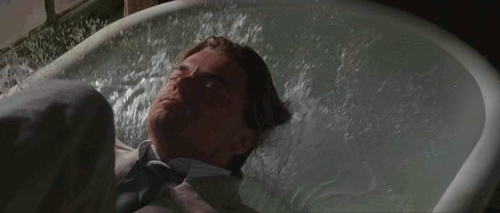In this essay, I would like to explore how Web 2.0, as a conspicuous and popular representation of a networked cum hypertextual environment, has affected the composition of narrative, using cinema as an example. I am particularly interested in this as a screenwriter and how, in a world of multiple platforms as nodes in a network, a film narrative must embrace these various outlets if one is to reach the greatest audience. This relates to network literacy and ‘being comfortable with change and flow as the day to day conditions of knowledge production and dissemination, and recognising that all of this may change, and appear differently in six months’ (p. 207, Miles, 2007). This is particularly resonant to the script or novel writer, I believe, whose work will invariably undergo umpteen drafts and is often ‘years in the making’. Throughout my discussion, I would also like to explore the concept of interactivity, comparing traditional cinema with ‘Cinema 3.0’ (Daly, 2010).
In her article, Cinema 3.0: The Interactive-Image, Kristen Daly (2010) claims that ‘cinema is taking on the characteristics of new media, existing in a network, intertextual space, which enables new developments in narrative that are increasingly interactive’ (p.1). This interaction includes interpretation and user-participation; the latter leading Daly to term the 3.0 audience member as ‘viewser’, in the spirit of Bruns’ ‘produser’ (Bruns, 2008).
Daly (2010) cites The Blair Witch Project (Myrick and Sanchez, 1999) as an early example of Cinema 3.0, where the pleasure isn’t simply in the viewing but in ‘searching and navigating’ (p.87) and finding out what is real and what is not, aided by Web materials as another node in the network, and a source of knowledge production and dissemination.
Other films which fall into the Cinema 3.0 category include the ‘remix’ films of Quentin Tarantino as examples of hyperlink films, where viewsers gain enjoyment by making the links to other films (via pop culture references) while watching such films.
The overall thrust has been films of increasing complexity, which reflect the complexity and fragmentation of the lives of contemporary viewsers, whose daily activities include surfing the internet and checking their smart phones; constantly networking and hyperlinking. Thus filmmakers such as Christopher Nolan can afford to depict highly complex plots and stylistic amalgamations in films such as Memento (2000) and Inception (2010), whose fans immerse themselves in online discussion forums discussing and testing different theories about the films’ meaning(s). If Jean-Paul Sartre argued that interpretation was property, and thus ownership: do such films afford viewers a more collaborative, interactive, and enjoyable experience that traditional ‘non-interactive’ films?

These are fascinating questions and I genuinely find myself grappling with creative choices and how to best adapt narrative to ensure viability in our multi-platform, boundary-less media landscape. I believe network literacy is essential for any writer striving for viability. Yet, as someone with an unashamed preference towards traditional narrative, I also wonder about the longevity of such films in an increasingly networked and complex multimedia environment.
For instance, I find Daly’s (2010) comparison between Cinema 3.0 films as films which cause viewers ‘think and link’ rather than just be ‘passively entertained’ (p.97) incorrect. In contrast to this idea, Rob Cover, citing Umberto Eco’s 1979 categorization of open and closed texts, notes that:
‘…the open text which deliberately gives an audience more than one possible interpretation is, in fact, less open to creative interpretation than the closed text…’ (p.151, Cover, 2006, author’s emphasis).
In other words, films with a built in ‘interactive’ dimension, such as The Blair Witch Project and even Borat (2006) – in which viewsers are enticed online to see what is real, what is not, what is staged, etc. – are not as open to individual, unique, aberrant interpretation as straightforward narrative films which are ‘diversely interpretable along individual and imaginative trajectories.’ (p.151, Cover, 2006). Thus, the viewer is not provided with pre-defined options to choose from, and must rely more on their own creative agency to interpret what they have witnessed.
The tendency towards so-called ‘Mind-game films’ (Elsaesser, 2009) and ‘overload’ films, such The Dark Knight (2008) and Inception, which reward multiple viewings and ongoing scrutiny by packing in as much plot and complexity and multiple drawn out climaxes, give the viewer more value, more bang for their buck. In reference to consumer compulsion towards DVD purchases, Australian media commentator Laurie Zion noted consumers’ ‘hunger for extra features’. I believe a similar concept is at play with the films mentioned above, which reward viewers with more information, features and revelations, the more they consume the networked product across multiple platforms. Perhaps this is the face of merchandising in our contemporary world, such that buy a t-shirt or poster with film icons is no longer satisfy enough to sustain engagement and spending across different platforms.
On a personal note, I feel that films such as Inception undermine the ability for closure for the viewer, which traditional cinema provides. Inception may reflect the fragmented inter-textual nature of our contemporary lives, but I feel it does not enable us to meditate on, seek refuge from, or make sense of our chaotic lives. In trying to work things out – and being aware of constantly trying to work out the plot – our ability to suspend disbelief is compromised. While Inception, like a puzzle, provides viewers with a visceral and cerebral workout, our emotions are left behind; thus the ability of cinema as a cathartic medium is also compromised. For this reason, I was distracted from deeply engaging in the subplot involving the film’s protagonist, Cobb (Leonardo DiCaprio) and the guilt he feels – and mystery – surrounding his wife’s death.
The issue here is one of immersion. While there is great fun to be had with a film which depicts multiple worlds and artful self-reflexivity – as in the case of Adaptation (2002) – there is also the risk of alienating the viewer. Daly (2010) sums up this feature of Cinema 3.0:
‘Viewsers are encouraged, if not forced, throughout the movie to try and figure out where they are in time and in levels of diegesis; thus, they are constantly navigating and popping in and out of immersion.’ (p.93)
I deeply enjoy ‘mind-game’ films, providing they do not remove me from the narrative to a point of no return. For instance, Alan Parker’s Angel Heart (1987) – as an example of traditional Cinema 2.0: The Time-Image – immerses the viewer in a vivid world of classic film noir cum supernatural tropes, yet the film’s wicked Deus ex machina challenge’s the entire narrative which has unfolded in the preceding 100 minutes. Some audience members may feel cheated by the film’s resolution, however I did not, since my attention and involvement was sustained throughout the film.
Hypertext, however, affords a very different viewing experience. According to Landow (2006), hypertext provides the foundation for a network. Hypertextual films then, as artefacts, represent just one point in the network, linking to various other nodes; online discussion forums, additional material on the film’s website, and online news articles interrogating the veracity of a film’s events (the various lawsuits which sprung up after the release of Borat provide one example) are all part of the network or web surrounding the film. Thus what defines the network is the relationship and communication between these different nodes (Landow, 2006), each of which is involved in ‘knowledge production and dissemination’ (p.206, Miles, 2007).
Thus, we see an inherently social, community quality to many of the films of Cinema 3.0. Films such as Inception, The Blair Witch Project and Borat entice viewers to crack the code, as it were, promoting discussion and incorporating the audience into the film’s discourse. An emphasis is placed on shared knowledge, community and collaboration, which I think can only be a good thing.
In comparison, the films of Cinema 2.0 offer an overall more personal viewing experience (the quality of individual films notwithstanding). While virtually all films have an online presence by virtue of having been uploaded to Web 2.0, what distinguishes these films from their successors is that they are less deliberately and explicitly interactive and networked. Despite this, earlier blockbuster films such as Star Wars capitalised on having a franchised presence, having video game spin-offs, merchandise and the like, as part of its network.
In summary, I believe that the traditional narratives of Cinema 2.0 are not dead or dying and will continue to exist alongside the more interactive, hypertextual films of Cinema 3.0. Clearly, both types of films provide a very different experience for audiences. Nevertheless, the question of how popular traditional (i.e. non-interactive) narratives remain in the future is yet to be seen; perhaps the audience for such films will become increasingly niche.
As a media practitioner and a lover of ‘straightforward’ narratives, network literacy obviously plays a huge part in understanding different audiences’ needs and calculating how, where and why a film will reach a market, in an effort to remain viable.
References:
Bruns, A. (2008). Blogs, Wikipedia, Second Life, and beyond: From production to produsage (Vol. 45). Peter Lang.
Charles, L. (2006) Borat: Cultural Learnings of America for Make Benefit Glorious Nation of Kazakhstan [Motion Picture] United States; United Kingdom: Twentieth Century Fox.
Cover, R. (2006). Audience inter/active Interactive media, narrative control and reconceiving audience history. New media & society, 8(1), 139-158.
Daly, K. (2010). Cinema 3.0: The interactive-image. Cinema Journal, 50(1), 81-98.
Landow, G. P. (2006). Hypertext 3.0: Critical theory and new media in an era of globalization. JHU Press.
Miles, A. (2007). Network literacy: The new path to knowledge. Screen Education, (45), 201-208.
Myrick, D. & Sanchez, E. (1999) The Blair Witch Project [Motion Picture] United States: Artisan Entertainment
Nolan, C. (2000). Memento [Motion Picture]. United States: Summit Entertainment.
Nolan, C. (2008). The Dark Knight [Motion Picture]. United States: Warner Brothers Pictures.
Nolan, C. (2010). Inception [Motion Picture]. United States: Warner Brothers Pictures.
Parker, A. (1987). Angel Heart [Motion Picture]. United States: TriStar Pictures.







